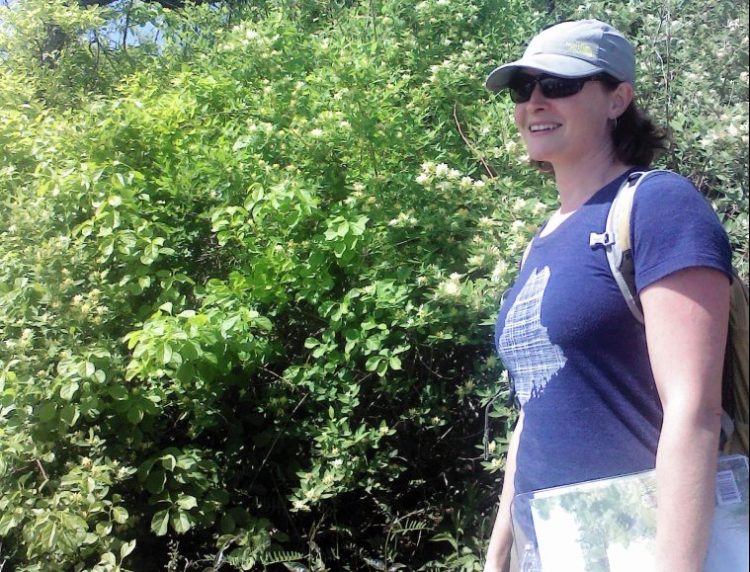When I learned that Kelly Corbin of the Wild Seed Project was leading a walk through part of Fort Williams Park in Cape Elizabeth, I wanted to attend for two reasons.
First, invasive species will remain a major problem at the park and in Maine for the foreseeable future. Second, although I have spent plenty of time at the former military fort in my hometown – it became a park in 1976 – I hoped that Corbin’s talk would give me information to help me be a better member of the Fort Williams board. Barring last-minute changes, I will have joined the board by the time this column reaches print.
Like much of Maine, Fort Williams is unwilling host to many invasive plants. While the Arboretum at Fort Williams has replaced invasives with mostly native ornamental plants in several locations, those cleared areas make up just a small percentage of the park’s 90 acres.
While Fort Williams would have had invasive plants naturally – by their aggressive nature they spread to untended land – it has an extra bounty. Many of the fort’s batteries and bunkers were buried under waste soil from road construction projects throughout southern Maine to keep them from posing hazards, Corbin said. Invasive seeds hitched a ride in that waste soil, and they found a welcome home. As generalists, meaning they don’t need a particular type of soil and will grow almost anywhere, the plants thrived.
Black swallowwort is, in my opinion, the most insidious invasive plant growing along the Maine coast. It is already reappearing in parts of the Fort Williams Arboretum, where it had been cleared before native plants were brought in. Swallowwort seeds resemble those of the native milkweed – they are so similar that monarch butterflies (which are threatened by habitat loss and climate change) can get confused and lay their eggs on swallowwort, but the monarch larvae can’t eat the swallowwort so they starve to death. The seeds blow great distances in the wind, which is how swallowwort spreads so quickly.
In addition, Corbin said, swallowwort is allelopathic, meaning it gives off chemicals that inhibit the growth of nearby plants.
While swallowwort can be pulled out by its roots, it’s a difficult job, Corbin said. Although it is tempting, you should never cut swallowwort, because cutting the plant actually makes it stronger. The most important method of control is to pull the seed pods before they ripen, at least controlling the plant’s spread.
Most other invasive plants can be controlled by frequent cutting, which prevents the leaves from taking energy from the sun to feed the plant.
Bittersweet is difficult but not impossible to remove. It spreads by its prolific seed, and winds its way up nearby plants, including trees, sometimes strangling them. When it’s small, it can be pulled as well as cut.
Multiflora rose behaves much like bittersweet, with the additional hazard of having tough thorns. Barberry has thorns, and is also a tick magnet, Corbin said, so people should make an extra effort to get rid of it. Aegopodium, or bishop’s weed, is a ground cover that is almost impossible to get rid of.
Corbin said the Wild Seed Project is not opposed to the use of herbicides to get rid of invasive plants: carefully targeted, done by a professional, when it is not windy and there is no rain in the forecast.
“It should be used as a scalpel, not a sledge hammer,” she said.
Corbin did say that invasive plants are of some use. Honeysuckle, for example, provides shelter for wildlife. Birds do eat honeysuckle fruit, but it does not contain the amount of fats and proteins that fruits from native plans do.
“It’s better than nothing,” she explained.
After the invasive plants are removed, native plants should be planted immediately to occupy the space so that no unwanted plants can take over the space.
“As (Frederick Law) Olmsted said, ‘Plant thick, thin quick,’ ” Corbin said.
The reason to plant thick is that gardeners usually start with small plants, which only later grow to cover a much larger area. By planting thickly, the small plants will keep out most weeds – (although do pull any that appear). And by thinning plants – pulling out some of the ones you paid for and planted a few years earlier – the remaining plants will be healthier, because they are not competing with their neighbors.
The Wild Seed Project recommends gardeners plant seed-grown plants. Many of the native plants sold at local nurseries are cultivars, sometimes called nativars, which are selected for large or unusual blossoms or distinctive foliage. They are all cloned by tissue culture, thus all have the same plant DNA. With seed-grown plants, each plant is different. If a disease or other problem strikes, some will manage to survive and thrive, and the species as a whole will be strengthened.
Another case of survival of the fittest.
Tom Atwell is a freelance writer living and gardening in Cape Elizabeth. He can be contacted at 767-2297 or at: tomatwell@me.com.
Send questions/comments to the editors.




Comments are no longer available on this story